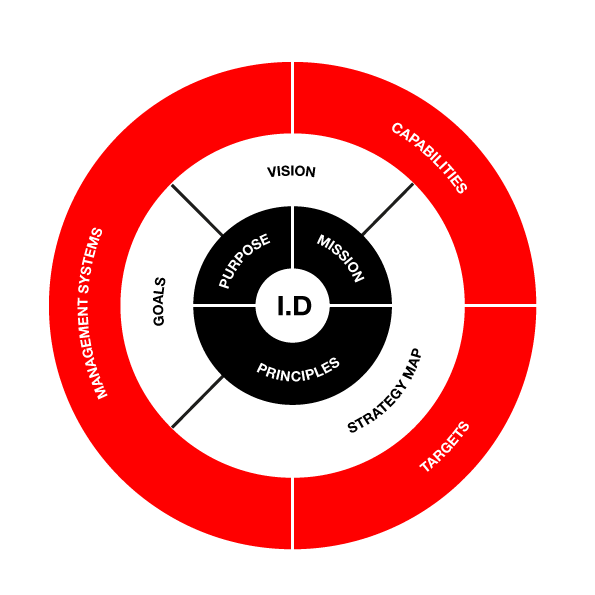Interactive Diagram
Click on any section of the diagram to get a description and an understanding of their function and characteristics.

Purpose
Purpose is your reason to exist.
Function: It provides meaning and orientation.
Characteristics: It addresses a good cause, is grand, and idealistic.
Principles
Principles are underlying values and behavioral guidelines.
Function: They provide a framework for decision-making, collaboration and desired behavior.
Characteristics: They are non-negotiable and universally valid within an organization.
Mission
Mission is what an organization does, and for whom.
Function: It defines an organization’s field of activity or business.
Characteristics: No frills.
Vision
Vision can best be defined as an organization’s state some years in the future.
Function: It paints a desirable picture that engages and motivates people.
Characteristics: It addresses hearts and minds of key stakeholder groups.
Strategy Map
A Strategy Map visually depicts an organization’s strategic priorities.
Function: It helps to steer towards the vision.
Characteristics: It addresses different stakeholder perspectives along the value chain.
Goals
Goals are the operational breakdown of strategy.
Function: They help move strategy into action.
Characteristics: They are SMART and the basis for individual targets.
Targets
Targets describe an individual’s contribution to implementing organizational identity.
Function: They create transparency, motivate, and make contribution matter.
Characteristics: They are role specific, addressing several elements of identity.
Capabilities
Capabilities are mission-critical skills for implementing organizational identity.
Function: They enable leaders and individual contributors to cope with change and live up to expectations.
Characteristics: They include occupational skills and a specific set of interpersonal skills.
Management Systems
Management Systems are frameworks to steer an organization.
Function: They help achieve strategic and operational objectives.
Characteristics: They support the status quo, not the change, and need to be adjusted.